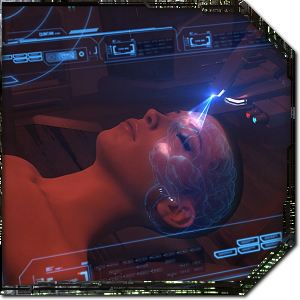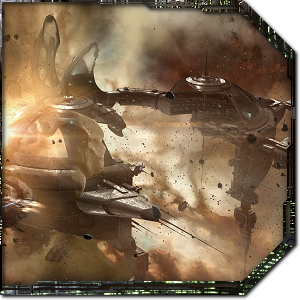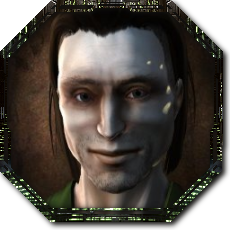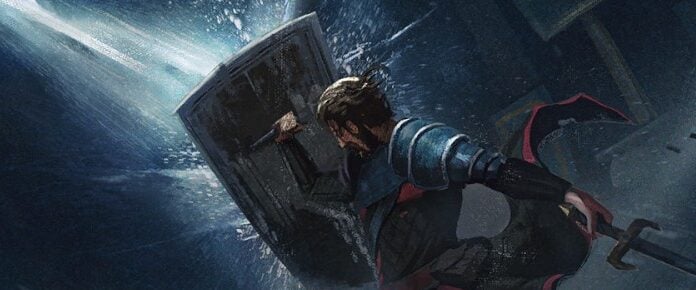
When EVE Online‘s development switched from two major expansions per year to ten smaller releases, the benefits were pretty difficult to argue with. EVE had garnered a reputation for pushing out new features before they were ready just to make the expansion deadline and then moving swiftly on to the next big idea. Moving to smaller but more frequent releases means a missed deadline is only a delay of a few weeks and completed features don’t sit in limbo for up to six months until the next expansion window. The results in terms of gameplay are pretty hard to argue with too, as EVE has seen more updates and content in the past year than in any previous year.
Dropping expansions hasn’t been a wholly positive change, however, and in the long term I think it may have actually harmed EVE‘s player numbers. The smaller updates don’t make much of a splash in the media and don’t seem to make people excited to play or resubscribe in the way that a big blockbuster expansion does. Some big expansion-worthy features have been deployed in the dozen small patches released over the past year, only to slip silently under the radar of past and prospective players. Executive Producer Andie Nordgren recently announced that EVE is switching back to a standard expansion model next year, but with the twist that expansions will be released when ready rather than forced out the door for an arbitrary six month deadline.
In this edition of EVE Evolved, I discuss some of the problems caused by smaller updates and why I think big themed expansions are an integral part of EVE.
 Big expansions hook people in
Big expansions hook people in
I wish I could say that the negative side-effects of switching from big expansions to smaller releases were unexpected, but the truth is that some of them were predictable. When the plan was first announced back in Fanfest 2014, I penned an opinion piece on why expansions and overarching expansion names are important for creating a cohesive media presence and generating anticipation. Massively-of-old’s EVE coverage actually got a lot of its hits from people googling for the name of the next expansion to find out what’s in it and maybe discover a reason to resubscribe. After an expansion’s release, people would then use its name to search for updated guides and ship setups that were proven to work after the update.
The Crucible, Inferno and Retribution expansions were laden with small changes to practically every area of the game, and that made sense then because there were hundreds of small things to fix that had piled up in the game over the years. These expansions were delivered in stages by necessity, and 2014’s switch to a faster release cycle just made that CCP’s ongoing policy. The smaller releases we’ve received since then have been less searchable and poorer drivers of web traffic than expansions of the past. Anticipation for each update can only be built up for about a month or two before it’s released and we start talking about the next one, so each release fails to reach critical density in the media. News posts, opinion pieces, and especially guides are also at risk of becoming obsolete a lot sooner, which is problematic for a difficult strategy-heavy game.
 Expansions let the dust settle
Expansions let the dust settle
I used to describe EVE as “a new game every six months,” as almost every expansion changed the game in some fundamental way that required you to adapt, often making your ship setups obsolete and presenting new challenges to figure out. CCP essentially threw some new toys into the ant farm every six months, shook it up, and watched players scramble to rebuild and re-assert their dominance. It’s all part of the darwinian nature of EVE‘s core sandbox gameplay, and those who adapted quickly to new game mechanics always had a distinct advantage until their secrets became public and everyone else caught up. The important thing to note here is that everyone did have time to catch up before the next expansion came and changed the rules again.
That dust-settling period after an expansion has always been one of the things that made EVE so appealing to me, but the more frequent updates have kind of robbed us of it. It took my friends and I about 6-12 months to fully explore the limits of Faction Warfare PvP, and it took most corps almost two years to completely unravel the secrets of wormholes and figure out the optimum strategies. Big expansions used to feel like an opportunity to get in on the ground floor of something big and maybe become one of the best in the game at it, and since it’s all new to everyone it could even help level the playing field between veterans and newbies. Expansions created natural jumping-on points for new and returning players alike, so it’s no surprise that player activity has been on the decline since their removal.
 Switching from big blockbuster expansions to smaller and more frequent releases made a lot of sense back in 2013 and 2014 when there were still hundreds of quality of life and balance issues to tackle. Today’s EVE is vastly improved on both fronts, and development has definitely shifted toward big features again recently. It makes a lot of sense to collect big features together and deploy them all at once as a single themed expansion again, and hopefully this means we’ll get a bit more time for the dust to settle between major updates.
Switching from big blockbuster expansions to smaller and more frequent releases made a lot of sense back in 2013 and 2014 when there were still hundreds of quality of life and balance issues to tackle. Today’s EVE is vastly improved on both fronts, and development has definitely shifted toward big features again recently. It makes a lot of sense to collect big features together and deploy them all at once as a single themed expansion again, and hopefully this means we’ll get a bit more time for the dust to settle between major updates.
Most EVE players go through periods in which they get bored and go inactive while waiting for the next big thing to come along, and we need big blockbuster expansions to pull those players back in. The slow trickle of new gameplay and content we now receive just isn’t cutting it, and delivering something as big as the Citadel structures in bite-sized chunks could cause it to lose impact both to players and in the games media. A ton of features have already been announced for the Autumn and Winter periods, and we’ll be getting our first taste of a new expansion with the introduction of Citadels and the capital ship rebalance in Spring 2016.
 EVE Online expert Brendan ‘Nyphur’ Drain has been playing EVE for over a decade and writing the regular EVE Evolved column since 2008. The column covers everything from in-depth EVE guides and news breakdowns to game design discussions and opinion pieces. If there’s a topic you’d love to see covered, drop him a comment or send mail to brendan@massivelyop.com!
EVE Online expert Brendan ‘Nyphur’ Drain has been playing EVE for over a decade and writing the regular EVE Evolved column since 2008. The column covers everything from in-depth EVE guides and news breakdowns to game design discussions and opinion pieces. If there’s a topic you’d love to see covered, drop him a comment or send mail to brendan@massivelyop.com!













